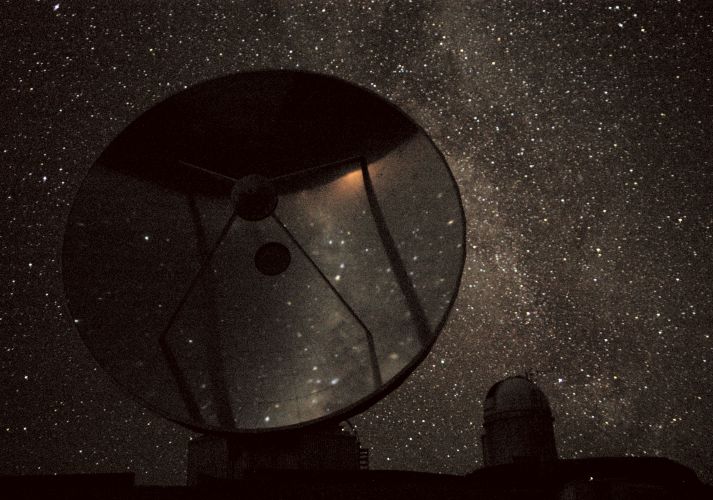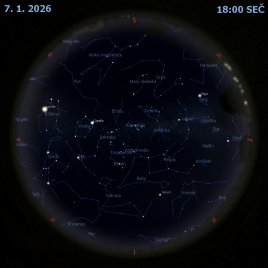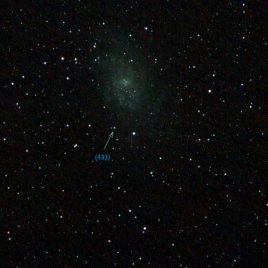Hvězdnatá noc v La Silla

Uznání: Nico Housen, European Southern Observatory
Za jasných a bezměsíčných nocí hvězdy nad vysokohorskou astronomickou observatoří La Silla stále svítí s plnou silou. Tento nádherný pohled na oblohu pořídil softwarový inženýr ESO Nico Housen při své nedávné návštěvě tohoto prvního místa Evropské jižní observatoře (European Southern Observatory - ESO) postaveného na vrcholku hory v Chile. Tímto skvělým snímkem se vine rovina naší Galaxie Mléčná dráha spolu se slabými hvězdami a tmavými prachovými mračny, které je obtížné uvidět ze světlem znečištěných oblastí. V popředí je vyleštěná parabola 15m antény švédského a ESO submilimetrového dalekohledu (nyní vyřazen z provozu). Za ním je v siluetě proti světlu hvězd vidět kopule 3,6m dalekohledu, jednoho z největších optických přístrojů v La Silla. Výhled za fotografem je vidět obrácený i s tmavým obzorem, který visí nad Mléčnou dráhou a hvězdnatou nocí, jelikož se odráží ve sběrném zrcadlovitém povrchu mísy.
NASA Official: Phillip Newman Specific rights apply. NASA Web Privacy Policy and Important Notices
A service of: ASD at NASA / GSFC & Michigan Tech. U.
Odkaz na originální APOD


